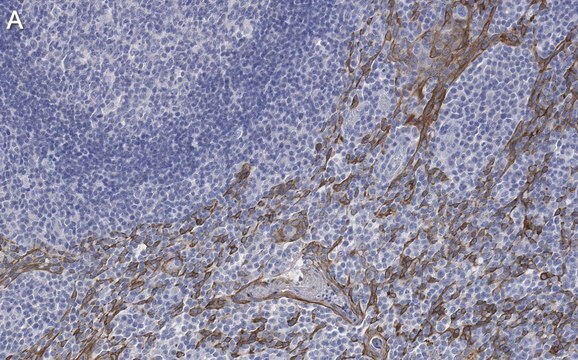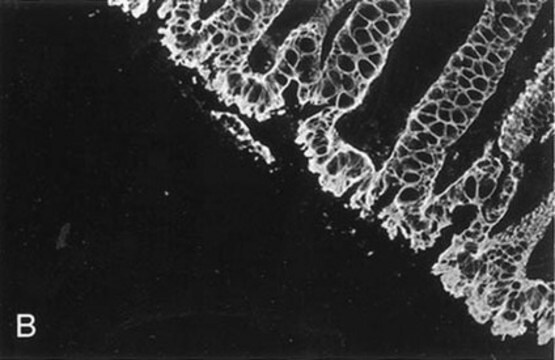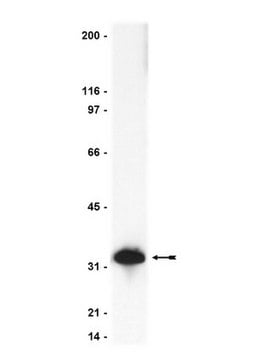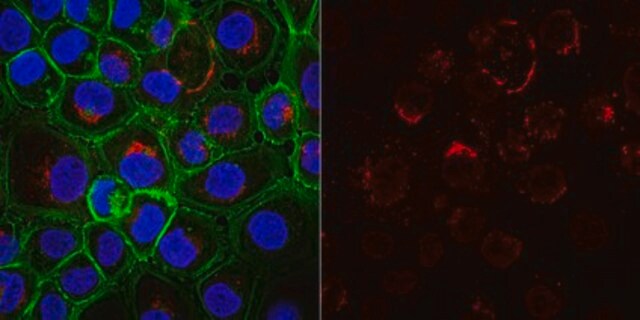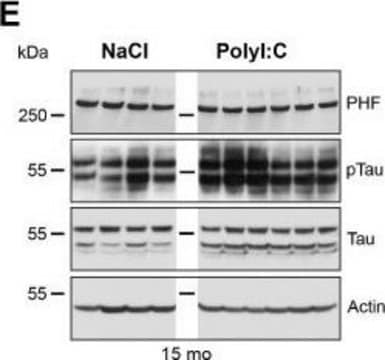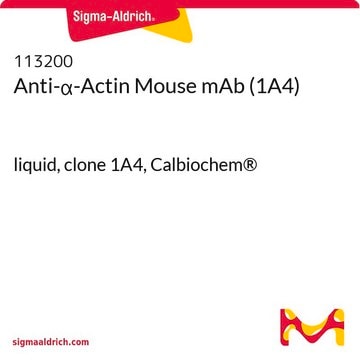MAB1620
Anti-Cytokeratin 5 Antibody, 6, clone D5/16B4
clone D5/16B4, Chemicon®, from mouse
Sinonimo/i:
58 kDa cytokeratin, Cytokeratin-5, CK-5, Keratin-5, K5, Type-II keratin Kb5
About This Item
Prodotti consigliati
Origine biologica
mouse
Livello qualitativo
Forma dell’anticorpo
purified immunoglobulin
Clone
D5/16B4, monoclonal
Reattività contro le specie
rat, mouse, human
Produttore/marchio commerciale
Chemicon®
tecniche
immunofluorescence: suitable
immunohistochemistry: suitable (paraffin)
western blot: suitable
Isotipo
IgG1
N° accesso NCBI
N° accesso UniProt
Condizioni di spedizione
wet ice
modifica post-traduzionali bersaglio
unmodified
Informazioni sul gene
human ... KRT5(3852)
Descrizione generale
Specificità
Immunogeno
Applicazioni
A 1:50-1:100 dilution from a previous lot was used for paraffin, high-temperature antigen retrieval required (Pressure cooker, Citrate/EDTA buffer pH 6.0, 4 minutes at full pressure).
Immunofluorescence:
A previous lot of this antibody was used in Immunofluorescence.
Western blot:
Recognizes a 58kDa and 56kDa band corresponding to cytokeratin 5 and 6.
Optimal working dilutions must be determined by end user.
Cell Structure
Cytoskeleton
Qualità
Western Blot Analysis:
1:500 dilution of this lot detected cytokeratin 5/6 on 10 ug of A431 lysates.
Descrizione del bersaglio
Stato fisico
Stoccaggio e stabilità
Risultati analitici
A431 cell lysate, human bladder tumor tissue.
Altre note
Note legali
Esclusione di responsabilità
Raccomandato
Codice della classe di stoccaggio
10 - Combustible liquids
Classe di pericolosità dell'acqua (WGK)
WGK 2
Certificati d'analisi (COA)
Cerca il Certificati d'analisi (COA) digitando il numero di lotto/batch corrispondente. I numeri di lotto o di batch sono stampati sull'etichetta dei prodotti dopo la parola ‘Lotto’ o ‘Batch’.
Possiedi già questo prodotto?
I documenti relativi ai prodotti acquistati recentemente sono disponibili nell’Archivio dei documenti.
Il team dei nostri ricercatori vanta grande esperienza in tutte le aree della ricerca quali Life Science, scienza dei materiali, sintesi chimica, cromatografia, discipline analitiche, ecc..
Contatta l'Assistenza Tecnica.